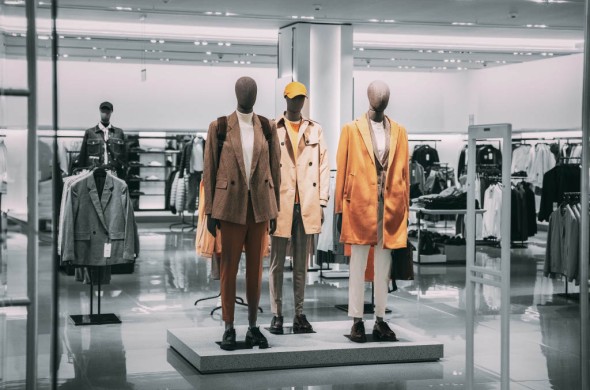The retail landscape is rapidly changing. Shoppers are becoming more demanding, expecting a seamless omnichannel experience that integrates the best of online and offline shopping. To meet these expectations, retailers turn to cutting-edge technologies and rethink their store designs.
While the retail landscape was already changing, the COVID-19 pandemic has expedited these changes. With an increasing focus on eCommerce and contactless shopping, retailers have had to adapt their strategies quickly.
The Need for an Omnichannel Strategy
Gone are the days when shoppers would go to brick-and-mortar stores for all their shopping needs. Now, shoppers are increasingly turning to online channels for research and purchase. According to studies, online retail sales will increase to $6.17 trillion by 2023, with eCommerce websites accounting for 22.3% of total retail sales. However, even as online sales continue to grow, brick-and-mortar stores are still an important part of the shopping experience. 59% of consumers say the ability to feel, try, and touch the product is critical for shopping in-store vs online.
This preference for in-store shopping is driven by the desire for instant gratification and the need for touch-and-feel experiences. Shoppers also value the ability to ask questions and get expert advice from in-store staff. To meet the needs of today’s shoppers, retailers need to adopt an omnichannel strategy that integrates the best of both online and offline shopping.
An omnichannel strategy starts with having a strong online presence. This means having a website that is optimized for search and conversion and active social media channels. It is also important to have a robust eCommerce platform that can handle the increased traffic and orders.
Retail Goes Digital
One of the most important aspects of an omnichannel strategy is integrating digital technologies into the brick-and-mortar shopping experience. This includes everything from in-store Wi-Fi and digital signage to self-checkout kiosks and contactless payment options.
Digital signage is one of the most effective ways to engage shoppers in-store. By displaying targeted content, retailers can influence shopper behavior and drive sales. For example, a clothing retailer could use digital signage to showcase the latest seasonal fashion trends.
Self-checkout kiosks are another way to improve the in-store experience. By allowing shoppers to scan and pay for their own items, retailers can speed up the checkout process and free up staff to assist other shoppers.
Contactless payment options are also becoming more popular, as they allow shoppers to pay for their purchases without having to handle cash or credit cards. This is especially important in the era of COVID-19 when shoppers are looking for ways to minimize contact with surfaces.
These measures are just the tip of the iceberg for digital retail. In the future, we can expect to see even more innovative technologies being used to enhance the shopping experience.
Automation on Every Retail Level
In addition to digital technologies, retailers are also turning to automation to improve the shopping experience. This includes everything from in-store robots to automated warehouses and distribution centers.
One of the most visible examples of automation in retail is the use of robots. Retailers such as Amazon and Walmart use robots to perform tasks such as restocking shelves and cleaning floors. Retailers can also use robots to assist shoppers, for example, by providing directions or product recommendations.
Automation is also being used in warehouses and distribution centers to improve efficiency and accuracy. By using robots to pick and pack orders, retailers can reduce the time it takes to fulfill online orders. This is especially important as the number of online orders continues to grow.
A Customized Experience
The future of retail is all about providing a customized experience. This means using data to understand shopper behavior and preferences and then using that information to tailor the shopping experience.
For example, retailers can use data from online channels to personalize the in-store experience. This could involve everything from targeted digital signage to personalized recommendations from in-store staff.
Retailers can also use data to customize the online shopping experience. This could include showing shoppers items similar to what they have purchased in the past or providing recommendations based on their location and time of day.
By using data to personalize the shopping experience, retailers can create a more seamless omnichannel experience that meets the needs of today’s shoppers.
Connected Inventory and Logistics
In the future, all retail inventory will be connected and available in real-time. This means that shoppers will be able to see what items are in stock at any time, regardless of whether they are shopping online or in-store.
This level of transparency will require a significant investment in technology and infrastructure. However, it will ultimately allow retailers to provide a seamless omnichannel experience.
It will also enable retailers to manage their inventory and logistics better. For example, if a shopper is looking for a particular item online, the retailer can check if it is available in-store and then have it shipped to the shopper’s home. This would be a major improvement over the current system, in which shoppers often have to place an online order and then wait for the item to be delivered.
The Future of Retail Design
The COVID-19 pandemic has shown that shoppers are looking for a safe and seamless omnichannel experience. To meet these needs, retailers are turning to digital technologies and automation.
The future of retail is all about providing a customized experience. This means using data to understand shopper behavior and preferences, and then using that information to tailor the shopping experience.
By using data to personalize the shopping experience, retailers can create a more seamless omnichannel experience that meets the needs of today’s shoppers. Connected inventory and logistics will also play a major role in the future of retail. All retail inventory will be connected and available in real-time, enabling retailers to provide a seamless omnichannel experience.
Retail Consulting Services
We believe that retailers should evolve at the same or faster pace to remain on top of the consumer market and meet the expectations of an ever-changing clientele. Ollen Group is one of the leading retail management consultant firms in the Middle East & Africa region (MEA) offering retail design services with turnkey solutions from strategy to execution. Our retail business consultant will help your through your journey.
Read our latest insights, ideas, and perspectives that explore the trends shaping the future of business and society. Our consultancy services go hand-in-hand with these insights, confirming our position as industry leaders. Get in touch to find out more about our consulting services and industry expertise.



